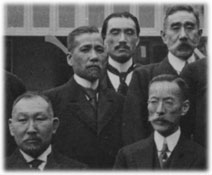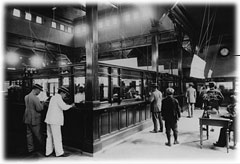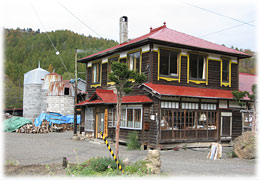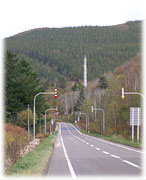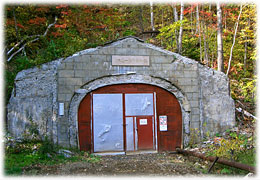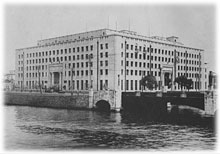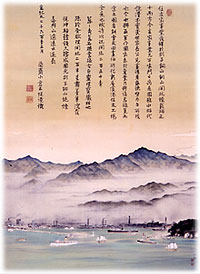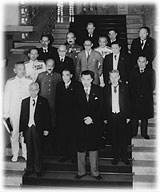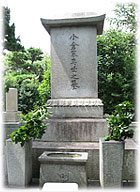Introduction
On July 5, 1941, a gentleman traveled to Nishijyuku in Gamo (present-day Omi-hachiman City), Shiga Prefecture, on the eastern shore of Lake Biwa. He was Masatsune Ogura who had resigned from his position as the sixth general-director of Sumitomo in April 1941 to take office as the minister of finance in the third Konoe cabinet. The villagers wondered why a minister had come all the way to their secluded rural community. Ogura was there to visit the grave of Teigo Iba, Sumitomo’s second director-general, to report his appointment as a cabinet minister.
Ogura quit his career as a government official and joined Sumitomo in May 1899 at the age of 24. As Ogura was about to embark on a business trip to Europe and North America in March 1900, Director-General Teigo Iba told him: “Sumitomo is not sending you to Western countries purely for the sake of the business. We also want your experience overseas to benefit society. After returning to Japan, if you think you could have a greater impact outside Sumitomo, you should pursue your aspirations elsewhere.” 42 years later, Ogura was conscious of a profound debt to his benefactor as he bowed deeply before Iba’s grave.
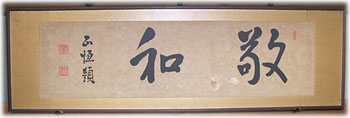
The tutelary deity of the Iba family is enshrined in Wakamiya Shrine, which is next to the site in Nishijuku where the family’s residence once stood.
Early life
Masatsune Ogura was born on March 22, 1875, the eldest son of Masamichi and his wife Koto at Daijyume in Kanazawa City, Ishikawa Prefecture. He had an elder sister, a younger brother and a younger sister. Serving the Nishio clan (4,000 koku) of Kanazawa Domain (fiefdom of the Maeda clan, 1 million koku), the Ogura family had once been retainers but became indirect vassals who were not entitled to audiences with the head of the clan.
In March 1877, when his father Masamichi, a judge, was assigned to a court in Komatsu, Ishikawa Prefecture, the two-year-old Masatsune remained with his grandparents in Kanazawa. Studying the Chinese classics with his grandfather Nagamasa every day was the origin of his lifelong love of Chinese literature, which enabled him to deepen relationships with Chinese counterparts during his distinguished career. In 1880 he entered the Kanazawa Yosei Elementary School (present-day Baba Elementary School). Among his classmates were Kyoka Izumi and Shusei Tokuda, both of whom became notable novelists. Though enthusiastic about literature, Masatsune found mathematics difficult. Yet by making great efforts, he managed to enter the Fourth Junior High School in Kanazawa and later the Faculty of Law of Tokyo Imperial University in 1894.
Masatsune’s favorite book was Records of the Grand Historian or Shiki by Sima Qian. Inspired by the magnificent historical records of China, Masatsune noted that “According to Sima Qian, one develops through encounters with distinguished individuals,” and so he took every opportunity to meet renowned people after he came to Tokyo.
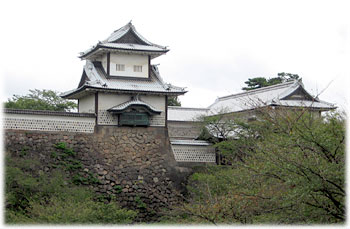
Kanazawa was a castle town of the Maeda clan (1 million koku).
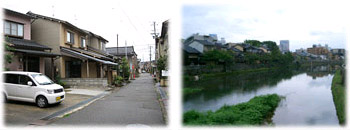
The house where Masatsune Ogura was born was in Daijyume (present-day Moriyama 1-chome, Kanazawa City) on the right bank of the Asano River.
The two houses in the foreground stand on the site where Ogura’s house once stood. At the Baba Elementary School nearby are monuments to the novelists Kyoka Izumi and Shusei Tokuda, classmates of Masatsune.

 EN
EN
